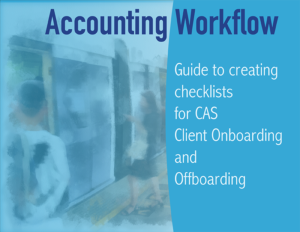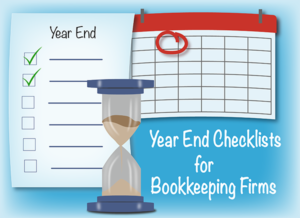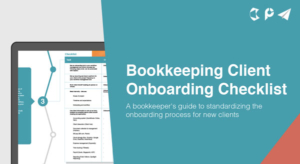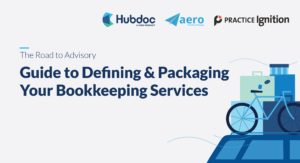No one likes to hear the phrase “scope creep”. In the accounting world, it kind of has the same ring as “Voldemort” or “giant spiders have taken control of the city.”
Scope creep occurs when projects become bigger than originally planned. Maybe a client is making demands that go outside your agreed-upon boundaries; maybe poor planning has resulted in discrepancies between how the project was outlined on paper and what is actually necessary to complete the work. Either way, scope creep can be a real threat to your business.
The good news is that, because scope creep can result from unpreparedness and communication failures, it can also be prevented through the use of checklists and proactively scheduling client services.
Creating checklists
We know that definitions of CAS can be confusingly vague. What matters is that your firm has a solid grasp of what CAS means to you and how every step in your advisory process is broken down. The surefire way to keep track of these steps is through advisory checklists. Just as you would create checklists for onboarding and offboarding processes for your compliance offerings, you should be making checklists for the different processes associated with advisory. Create checklists for each advisory service you provide and make sure your staff is aware of each step that goes into completing your projects with them.
Proactive scheduling
Let’s face it, sometimes it’s hard to anticipate client needs… But it’s not good to get into the habit of having spontaneous meetings and adding last-minute items to your agenda. Ideally, you should have a good grasp of what your client needs and when. You don’t want to be caught off guard. This is why it’s good to get in the practice of proactive scheduling. Set deadlines and schedule recurring meetings to touch base with your clients as projects advance.
Don’t be afraid to set boundaries
It is perfectly okay to say “no” if your client begins asking for things beyond what was initially agreed upon. Refer back to your contract if any misunderstandings arise, and have a script ready for denying requests. You can also take an opportunity to upsell your services here. If a client request work beyond your agreed-upon scope, tell them you would be happy to perform those services for an additional fee. Remember: your time is very valuable, and your budget was set according to a specific schedule and list of services.
Overextending yourself can result in you having less time to work on other projects and doing more work for less. Are you worried about damaging client relationships should you refuse to provide additional services? Don’t. Your clients also benefit from you planning ahead and not taking on tasks you aren’t prepared for. If your client won’t respectfully accept your refusal, they probably aren’t a good client.
Communication is key
One of the best ways to prevent scope creep in your CAS is to make sure you’re communicating effectively with your clients from the start. This is where onboarding checklists can come in handy. Set an initial planning meeting with your client where you can go over the terms of the engagement. Your client should know exactly what they are getting. Even if certain terms are listed in your contract, it is good practice to communicate them directly to your client as well.
We often think of scope creep, to some degree, as unavoidable. Well, it doesn’t have to be that way. Thorough planning and strong communication can help keep you and your firm on track. After all, you deserve to be paid what you’re worth.











